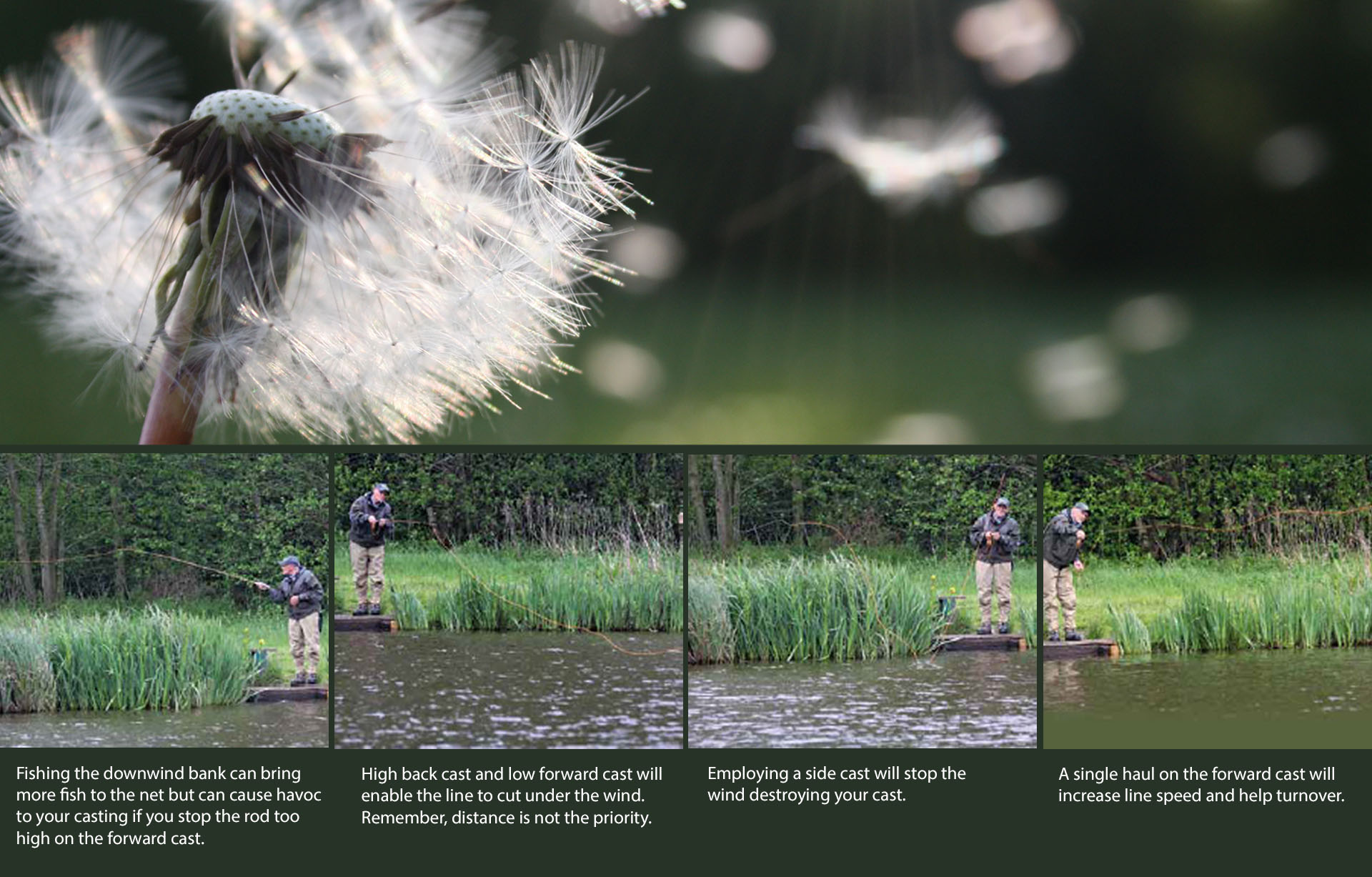Casting into the wind
How often have you heard fellow anglers say that they didn’t go fishing yesterday because it was so windy? As game anglers, there are a few techniques we can use to defeat the wind and make it our friend. We should also consider that if it has been windy for a while, all the natural food has been blown towards the bank, so long casts are not necessary. A lot of anglers think they need to use more power and effort to cast into the wind. This is not the case, and is in fact the worst thing they can do. By adjusting their technique and still allowing the rod to do the work, they can achieve a reasonable cast despite the conditions. The normal casting arc for an overhead cast is 11am to 1pm on an imaginary clock face. If we do a normal overhead cast into a headwind, there’s a good chance it will blow the line, leader and fly back towards the caster, making the cast not only inefficient, but also dangerous. It’s important to wear a cap and glasses to protect our head and eyes. Safety must be our first priority.
High Back Cast, Low Forward Cast
So when you’re casting into a headwind you need to alter the trajectory with a high back and a low forward cast. So, if you have an oncoming wind, simply advance the casting arc forward to either 9am to 12pm or 9am to 11am, depending on how strong the wind is. In doing so you will drive the line into the wind, thereby giving it less chance to take hold of the line. We should also use shorter and stronger leaders and tippets because very long leaders tend to tangle. Keeping our loops tight is also more efficient.
Single Haul Forward
If the wind is really fierce we can also introduce a ‘single haul’ on the forward cast. A haul is simply a tug or pull on the fly line as near to the forward stop position of the rod as we can achieve. This is to increase the line speed and not the power. When employed with the advanced position of the casting arc, this is a very effective way of firing the line out into the wind. We must understand that because of the windy conditions, the delicate presentation of the cast is not our first priority.
Side Cast
Another technique we can use is the side arm cast. Because of the dynamics of the wind, there is a layer of air, approximately 18 inches to two feet in height, which is not blowing directly towards us but is swirling. We can use this to our advantage, as long as we have sufficient free space from obstructions behind us. This is basically a normal overhead cast that is carried out in a horizontal plane. We must, however, speed up the cast to take into account the effects of gravity. This particular cast may take a little more practice. Care must be taken to keep the rod tip in as near to a straight-line path as possible and not to twist the wrist while casting. This is quite a satisfying cast when done correctly and we realise how little effort we actually need to defeat the wind.
If you would like a GAIA Instructor to help you put theory into practice, use Find An Instructor below to get in touch with your local GAIA instructor and have a chat about your requirements.
Enter a city, town, place or postcode into the box below to find nearby GAIA Instructors.

